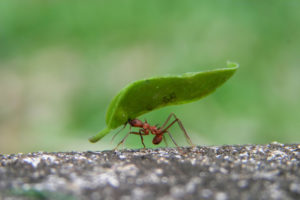 One of my inspirations for thinking about resilience is the natural world. Think about the resilience of a willow tree, or a river, or a colony of ants. What strikes me about all of these things is that for them the process of “bouncing back” does not just start when they encounter a disruption; it’s built into the system from the beginning. A willow tree is resilient because it has grown deep roots, and has a cellular structure that allows it to bend with the wind. A river is resilient because its droplets keep flowing, patiently moving around or through whatever might be in the way. A colony of ants is resilient because a thousand little creatures, each following its own simple logic, come together to move objects, recreate structures, and carry on when disruptions occur.
One of my inspirations for thinking about resilience is the natural world. Think about the resilience of a willow tree, or a river, or a colony of ants. What strikes me about all of these things is that for them the process of “bouncing back” does not just start when they encounter a disruption; it’s built into the system from the beginning. A willow tree is resilient because it has grown deep roots, and has a cellular structure that allows it to bend with the wind. A river is resilient because its droplets keep flowing, patiently moving around or through whatever might be in the way. A colony of ants is resilient because a thousand little creatures, each following its own simple logic, come together to move objects, recreate structures, and carry on when disruptions occur.
As human beings, we are built to change. We do it all the time. When change feels hard, it’s usually because we have established expectations about how things will be, and we struggle against the fact that they are not going the way we wanted or planned. We sometimes struggle against the power that others exert over us–we resist being changed. But the more energy we spend in the struggle, in emotions such as anger, disappointment, and fear, the less we have to give to the process of moving on. So one challenge, for me, you, and all of us, is how we find in ourselves–and create in ourselves–the deep roots, the patience, the persistence that will allow our natural resilience to surface even when things don’t go the way we’d planned.
